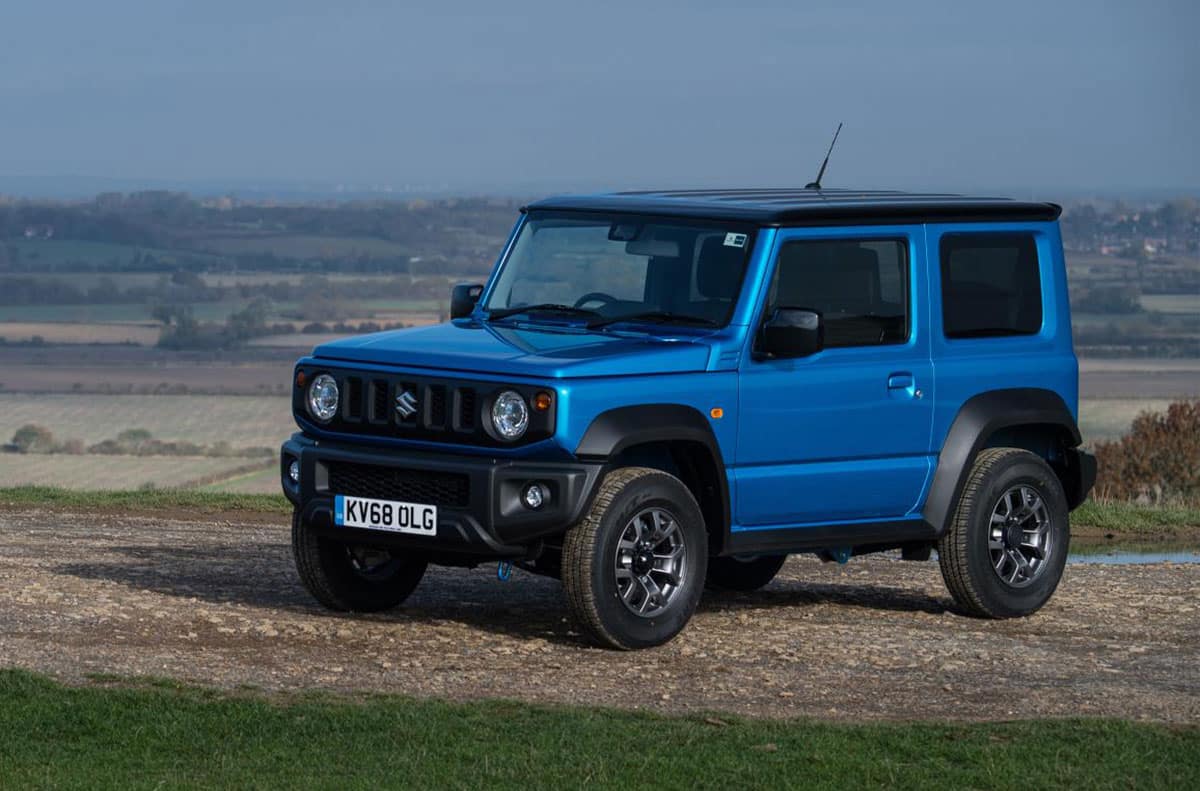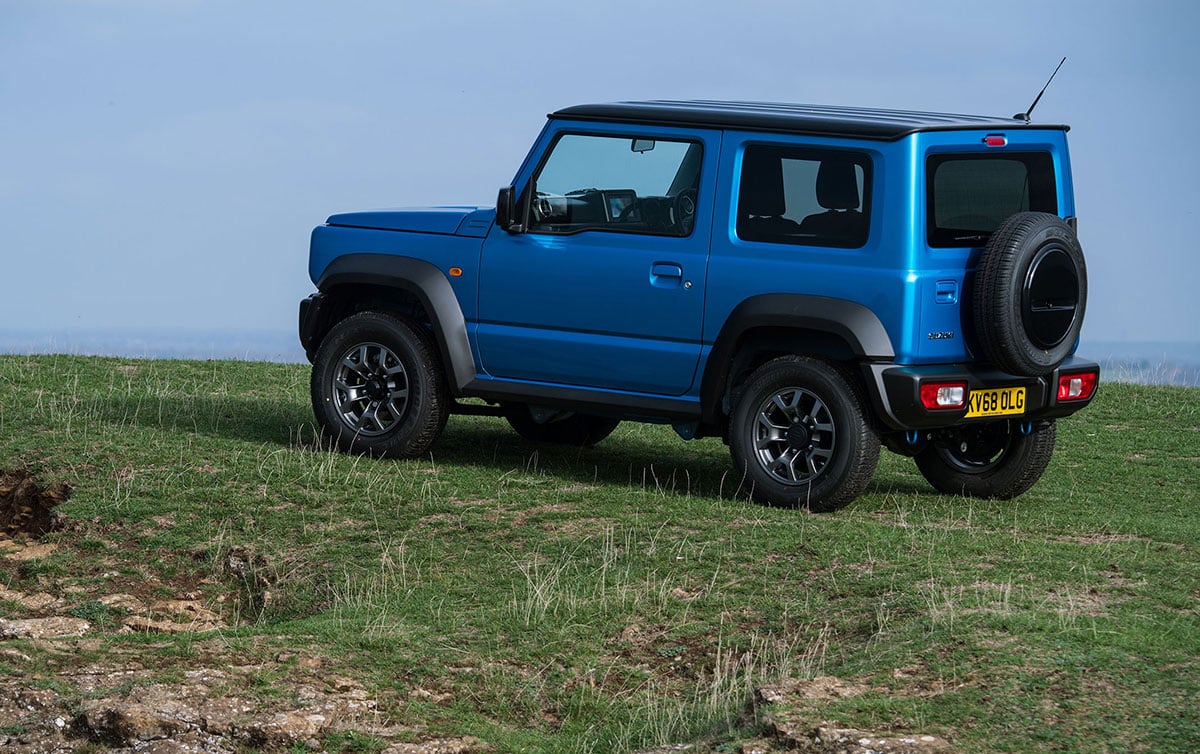60-second summary
What is it?
The new Suzuki Jimny is the latest evolution of the brand’s iconic go-anywhere SUV.
Key features
- Proper 4×4 off-road ability, ladder chassis
- Retro styling treatment
- New engine and more electronic tech
Our view
The Suzuki Jimny is a proper old-school off-roader equally at home, perhaps more at home on a rocky track as it is the tarmac.
It will appeal to a particular kind of buyer who will accept the compromises – a poor safety rating, not a lot of interior room and efficiency figures that don’t impress. Off-road, however, it’s a lot of fun…
Similar cars
Jeep Wrangler, Dacia Duster, Land Rover Discovery
Full review
Introduction
This, remarkably, is the story Suzuki doesn’t really want us to write about. The latest Jimny is an all-new version of the Japanese brand’s highly capable ‘proper’ off-roader, styled in a shamelessly retro look. And the level of demand for it has taken Suzuki totally by surprise – resulting in the brand simply not being able to make enough of them, by a long way.
The new Jimny replaces a car that was on sale in not greatly updated form for a remarkable 20 years. And the target market is clearly demonstrated by the fact that very many of the 42,000 sold in the UK over that time are probably still on the road. So the latest Jimny retains the tough, go-anywhere capability of its predecessor while taking the styling even more retro.
Even a less than impressive three-star Euro NCAP safety rating has failed to dent the demand for the car – it went on sale in Japan first and the waiting list for one stretches over a year. The UK website set up to register interest in it has topped 10,000 entries, and Suzuki’s UK allocation in 2019 is currently just 1200 cars.
So basically, if you read this report and fall in love with the Jimny, you probably won’t be able to have one…
While an all-new car, the Jimny retains much that is traditional while updating it as required. So the ladder chassis is retained for toughness while gaining extra beams to further improve rigidity. The shell is slightly shorter than the outgoing model, but is higher and wider to free up more interior space.
There is a new 1.5-litre petrol engine, a chassis tuned for better on-road dynamics without compromising off-road ability, and lots of modern electronic tech sourced from other modern Suzukis.
The looks are reminiscent of how SUVs looked when they were first created in the 1960s. The Jimny’s proportions are as square as the wheel arches, and it sits high on its suspension. The wheels hung out of the corners improve all those off-road essential measurements, the approach, departure and breakover angles, over the previous version.
The front side windows dip at the front, the pillars are slim with lots of glassware and the bonnet flat, so it’s much easier to see the car’s extremities from the driving seat – essential when off-roading, as is a flat and horizontal instrument panel to help gauge just how far the car has tilted while negotiating a rocky track.
Buying and owning a Jimny
The Jimny is available in two trim levels, Suzuki’s familiar SZ4 and SZ5 grades – there is no entry-level SZT trim as on other Suzuki lines.
SZ4 versions cost from £15,499, which is more expensive than the outgoing version but with substantially more equipment. Steel wheels are standard on this car, which makes sense as alloy rims would not be the best option on rocky mountain tracks.
Bluetooth connectivity is included, as is air conditioning and Bluetooth. But there is also some old-school tech too – the DAB radio comes as part of a CD tuner. Remember CDs in cars?
The SZ5 starts at £17,999 and includes alloy wheels, LED headlights, climate control, leather on the steering wheel and heated front seats. And yes, it also gets Suzuki’s infotainment system with navigation and smartphone compatibility.
As mentioned, the Jimny has earned only a three-star safety rating, and that’s despite autonomous emergency braking (dual sensor brake support in Suzuki parlance) being included on all versions.
Euro NCAP marked it down for its airbag performance and body deformation in an impact. Suzuki argues that the car is built as an off-roader and, as a result, its shape means “it won’t crash well.”
Continued on next page: Interior, drive experience and our verdict






